LaTeX templates and examples — Conference Paper
Recent

This is a template for the International High Performance Buildings Conference at Purdue, downloaded from the Purdue Conferences website.
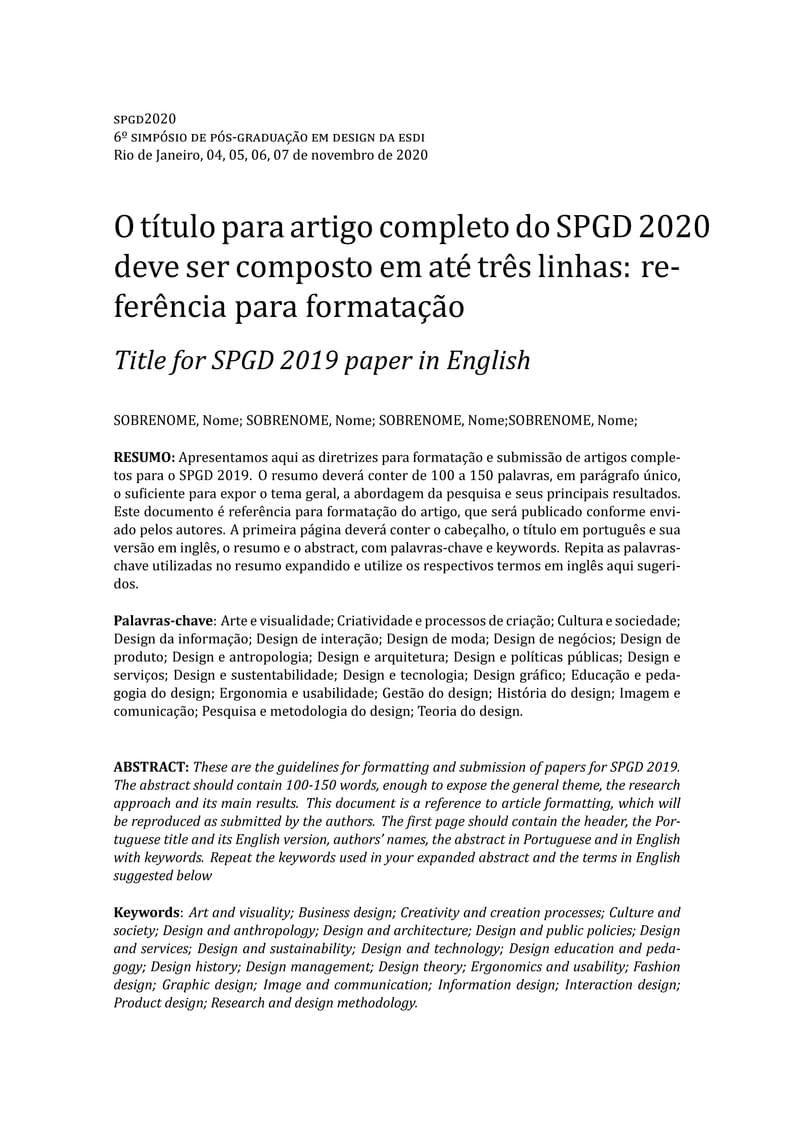
Modelo de artigo completo para o Simpósio de Pós-Graduação em Design da ESDI - SPGD
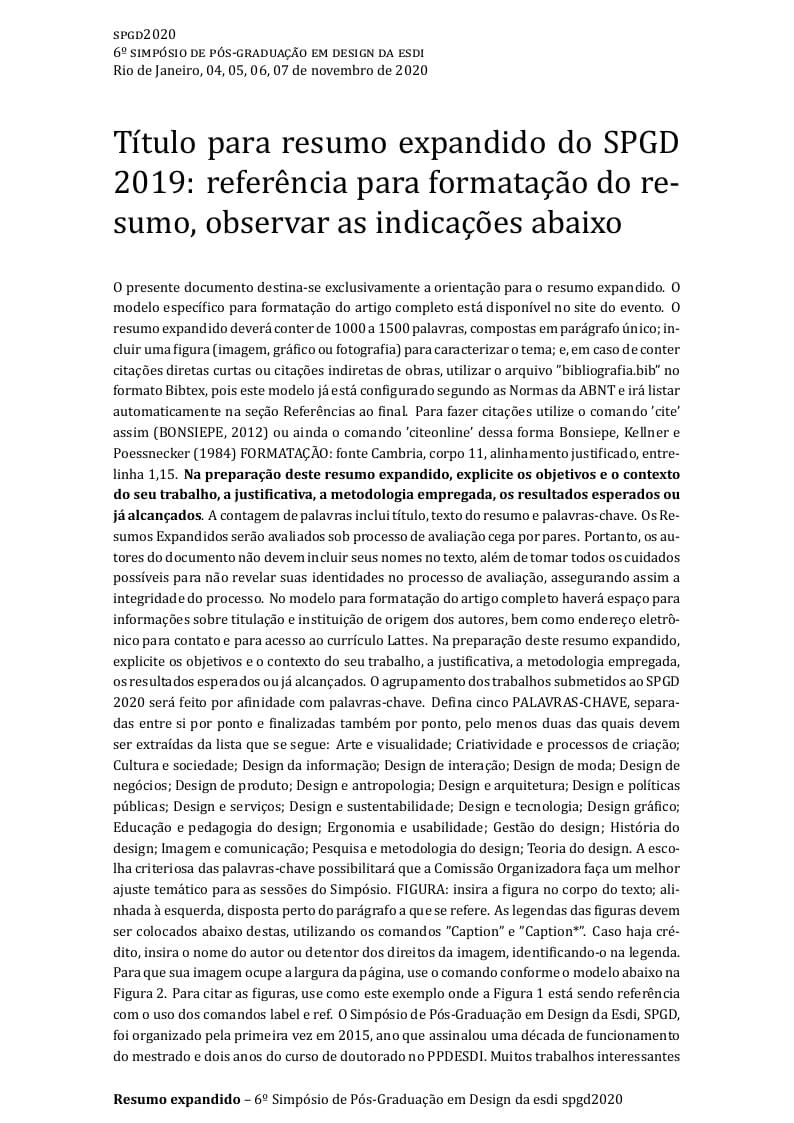
Short article template for the SPGD - Simpósio de Pós-Graduação em Design da ESDI. The symposium organized by the Postgraduate Design Program - PPDESDI of the Universidade do Estado do Rio de Janeiro - UERJ
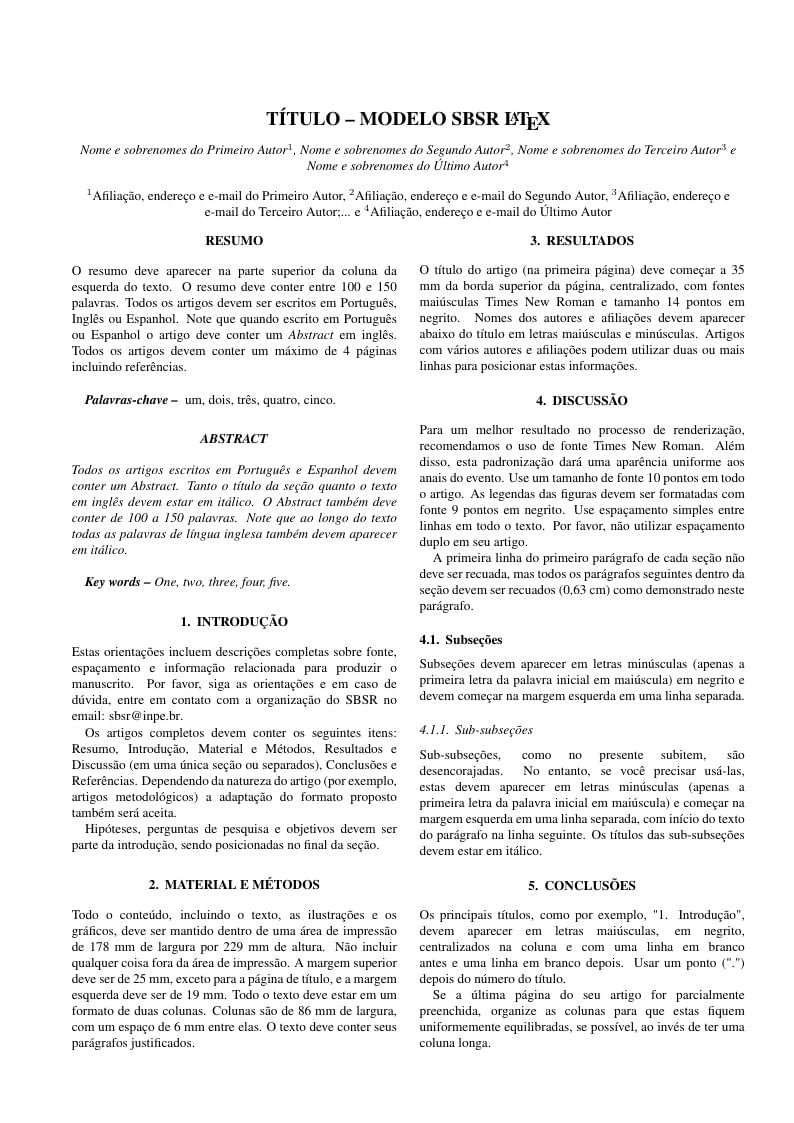
Este é um template para LaTeX do modelo de publicação de artigos no Simpósio Brasileiro de Sensoriamento Remoto. Foi criado em 2019 por Rogério Flores Junior, e adaptado em 2020 por Thales Sehn Körting. O documento está em constante manutenção.
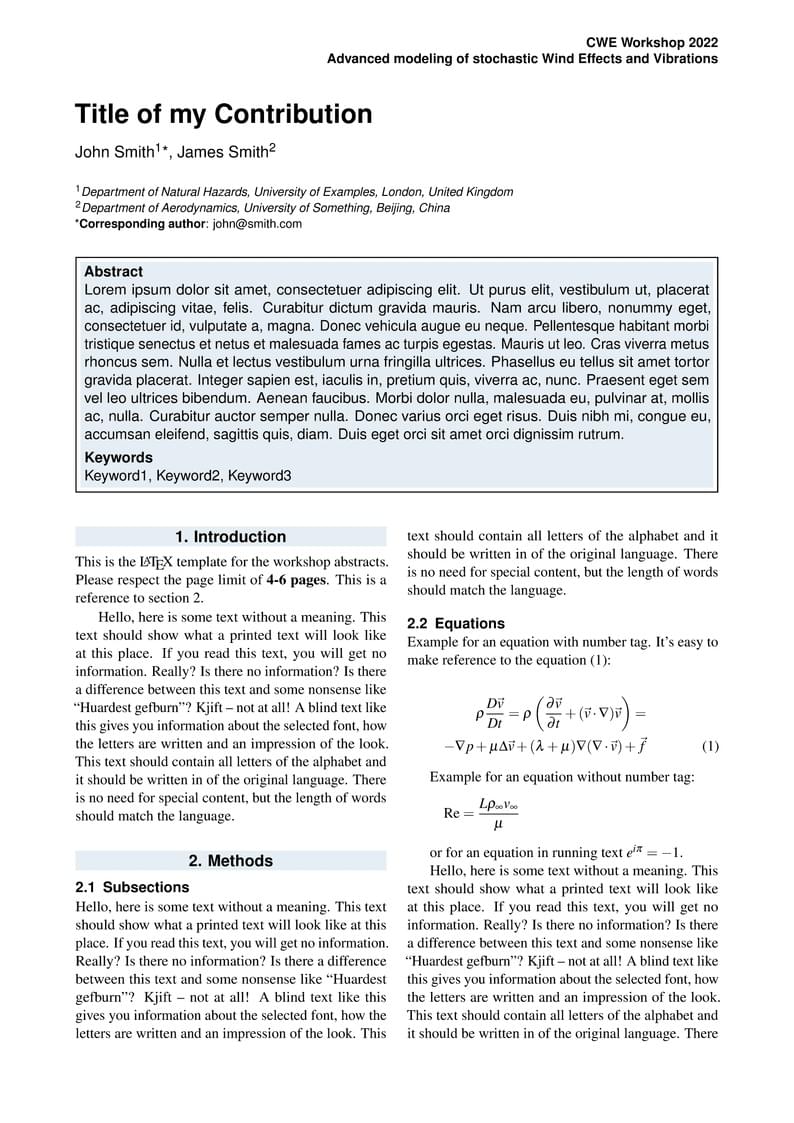
This is the official template for the workshop abstracts.
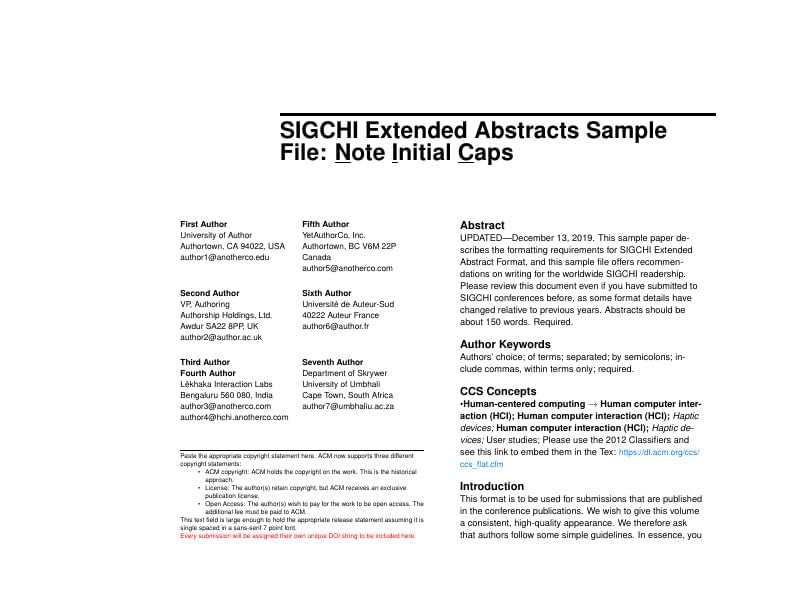
ACM DIS2020 Extended Abstracts paper format. For more information see https://dis.acm.org/2020/
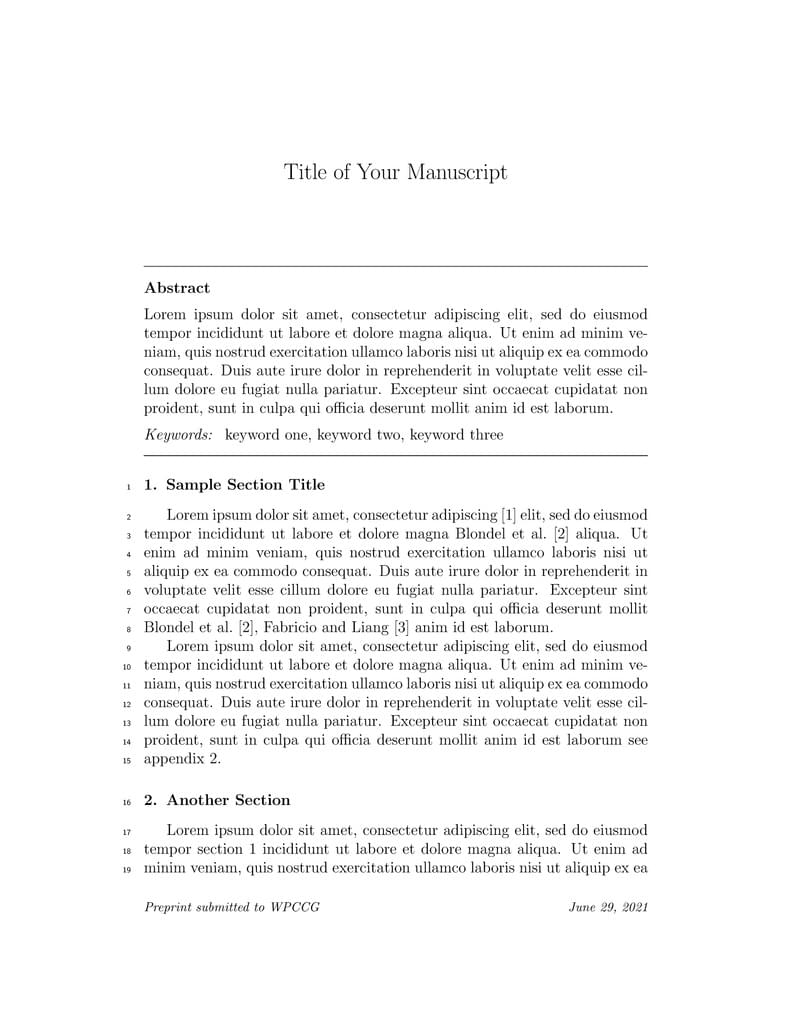
This is a template for writing extended abstracts for WPCCG.
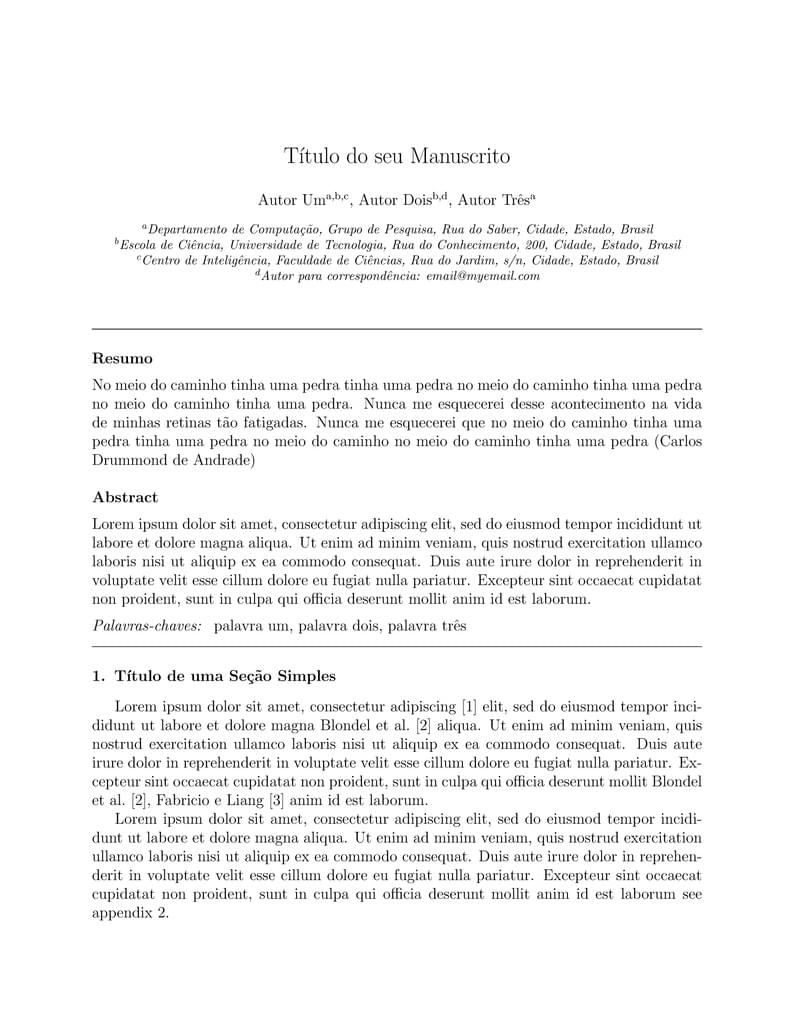
Template para preparar versão final do resumo estendido para o WPCCG
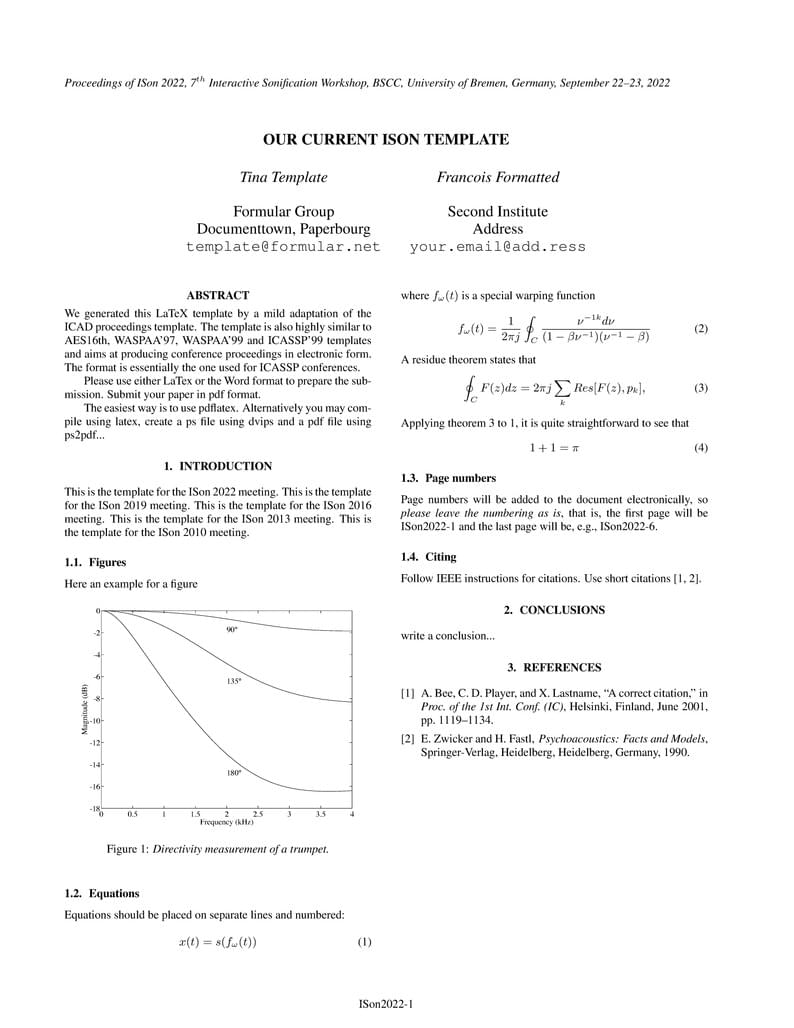
Template for the Interactive Sonification (ISon) workshop 2022 proceedings.
\begin
Discover why over 20 million people worldwide trust Overleaf with their work.